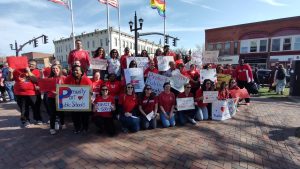“Hoax” Declaration Mischaracterizes Bias Incidents, Stifles Productive Dialogue
September 6, 2013
The College aired its dirty laundry to the nation last semester when media outlets swarmed campus to report on the rash of bigoted graffiti cropping up in academic and residential buildings. The coverage of the events focused primarily on an alleged sighting of a person in Klan robes, though evidence of hateful actions perpetrated against people of color, the Jewish and LGBTQ communities, and women, was much broader — both in scope and in form.
As the summer came to a close, Oberlin was thrust back into the spotlight. A few conservative bloggers got their hands on the recently released police reports, in which the names of the two students removed from campus last semester in relation to the hate speech are revealed and their offenses enumerated. The reports of stalking and harassment of multiple student activists do not number among them.
After analysis of (incredibly ideologically inconsistent) online profiles for Alden and Bleier, writers from the Daily Caller and Legal Insurrection surmised that because the two students removed from Oberlin — would-be upperclassmen Matt Alden and Dylan Bleier — were “privileged Obama-supporting white kids” “trolling” their peers to evoke reactions, their acts amounted to a hoax. Bleier’s brief stint as an Obama campaign volunteer is taken as evidence that the perpetrators were neither racist nor bigoted.
Ultimately, the conclusion drawn by these articles was that genuine reactions of fear, outrage, creativity and solidarity to the hateful acts are dismissible as invalid because the identity of the two censured students don’t conform to the caricature of a bigot.
On his blog Legal Insurrection, Cornell University Law Professor William A. Jacobson wrote that, “school officials and local police knew the identity of the culprits, who were responsible for most if not all of such incidents on campus, yet remained silent as the campus reacted as if the incidents were real.” *
However, the incidents were real. Whether or not the participants in the hate-related incidents believed themselves to be trolling or expressing genuine prejudice, the bigoted actions caused all-too-real pain and fear for members of the Oberlin community.
But the bloggers’ claims extend beyond trolling, going so far as to label the hate-related incidents as part of a wide-spread “hoax” or “stunt” on the part of campus administrators and liberal students to provide evidence that racism is alive and well — the assumption being that those concerned about racism today would need to fabricate evidence to provide support for a claim that racial inequality still exists. Not only does this unfairly trivialize the experience of those affected, it’s frankly ridiculous.
Canceling classes on March 4 was not solely a response to the reported sighting of a KKK member on South bowl or the written harassment and graffiti, but also about larger systemic issues that have been brewing on campus for far too long and came to a head as bigoted acts continued to gain in severity and breadth.
As the incidents of bigotry continued to mount last semester, many student activists and professors pointed to Oberlin’s historic and current issues with privilege and diversity. Anonymous posters on forums such as ObieTalk have been writing bigoted comments (often targeting the same communities as last semester’s graffiti) for years, as well as in and on campus buildings; north and south campus still remain relatively divided along racial lines; many departments lack diversity of faculty, students and curricula; and many see certain campus spaces and communities as inaccessible for a variety of reasons.
Jacobson’s critique of the administration’s lack of transparency is not without merit. Only recently did the College release a vaguely worded statement in response to the online firestorm, saying that — under the recommendation of law enforcement — it made information public as soon as it could. In spite of the tardy explanation, it is clear the College was privy to relevant details regarding the incidents and their perpetrators and made a decision to withhold even general information. In fact, the Review reported the students’ removal on March 6 — well before the College did.
The recent online commentary has purported to delve more deeply into the truth behind the current state of race relations in the United States, but instead uses an inconclusive police report to dismiss all of the facts at hand, and ultimately serves to stifle productive dialogue in the process. Rather than getting hung up on uncovering dubious conspiracies, we should begin the work of creating lasting systemic change and encouraging a more productive dialogue — of which the Review seeks to be a part.
*Emphasis our own.


















